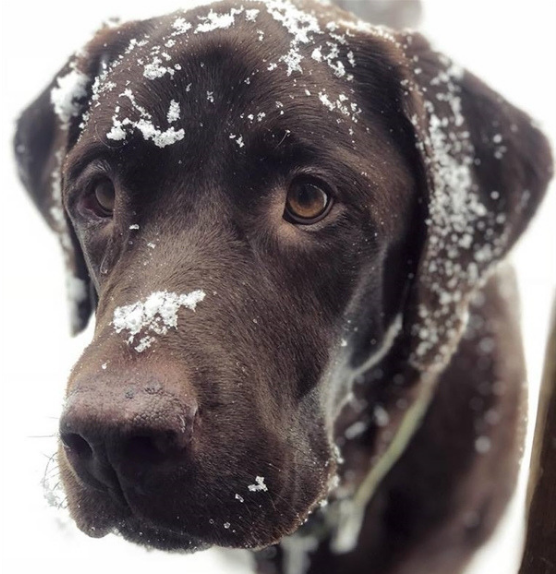As we experience frigid temperatures across New England, it’s important to keep in mind that our pets are affected by the cold much like we are. Although our furry friends have natural coats, that’s not always enough to keep them safe and comfortable in bone-chilling weather. In this post, we cover how to recognize signs of extreme cold in your pet, and what to do when your pet is experiencing symptoms of hypothermia or frostbite.
Your Pet Is Feeling Too Cold If They…

- Are shivering or shaking
- Cry or bark
- Lift their paws off the ground
- Seem anxious and/or uncomfortable
- Search for shelter or places to hide
- Are hesitant while on walks or try to turn back towards home
- Start hunching over and tuck their tails
- Lay near or on top of heating elements in your home
There are many ways you can keep your pet from getting too cold during the winter months. The most important thing you can do is limit their time outdoors. Take shorter walks or have playtime inside, so your pet doesn’t feel as inclined to explore the outdoors. Add a coat or booties to your dog’s wardrobe to help reduce heat loss while outside.
If you have a particularly outdoorsy pet (like a fiercely independent outdoor cat, for example), make sure there is a dry place where they can take shelter if they start to feel too cold. Shelters should be large enough for your pet to stand up and turn around in, and have clean, dry blankets, towels, or other bedding. Keep in mind that no matter how stubborn your pet is, no animal should be left outside for extensive periods of time in frigid temperatures, under any circumstances.
Your Pet May Be Experiencing Hypothermia If They…

- Are violently shaking or shivering
- Exhibit signs of weakness
- Become lethargic
- Have muscle stiffness
- Start taking slow, shallow breaths
- Seem less alert
- Have dilated and/or fixated pupils
- Seem like they’re in a trance or stupor-like state
- Lose consciousness
If you think your pet is showing signs of possible hypothermia, call your vet as soon as possible. To provide immediate care, move your pet to a warm space and wrap them in blankets. Be sure to dry off your pet if their coat is wet. You can use a hot water bottle to provide additional warmth, but make sure it’s not too hot and there is a layer of protection between your pet and the bottle. If it’s at the proper temperature, you should be able to comfortably hold the hot water bottle in your hands. Try to refrain from using an electric heating pad, as it could potentially burn your pet, even at a low setting. Consult with your vet immediately to determine if further care is necessary.
Your Pet May Have Frostbite If…
- Their skin is discolored (pale gray or blue), especially on their ears, tail, or paws
- Affected areas are cold, brittle, or hard to the touch
- They show signs of pain when you touch affected body parts
- There is swelling in the affected area
- They have blisters, sores, or peeling skin
- There are spots where the skin is blackened or dead
It can be difficult to detect the signs of frostbite in your pet, as they are not always immediately noticeable. If you suspect your pet may be experiencing frostbite, contact your veterinarian promptly. To provide immediate care, you can wrap the affected areas in warm (not hot!) towels or blankets. Be careful not to massage or rub frostbitten skin. You can also apply warm water or compresses to the area. Water temperature should be between 104 and 108°F, and you should be able to comfortably place your hand in it. If the water is too hot, you could cause more damage. It is not recommended to use dry heat, like heating pads or hair dryers, on affected areas. DO NOT warm the affected area if you are outdoors or cannot keep it warm. Warming frostbitten skin and then allowing it to become cold again can severely damage the tissue. Always be sure to completely dry areas once they have been warmed. Consult with your vet immediately to determine if further care is necessary.

Extremely cold weather can be dangerous for humans and animals alike. When experiencing freezing temperatures, make sure you adequately prepare your pet for exposure to cold. Put them in properly fitting coats and booties (if you can) before taking them outdoors. Don’t leave pets outside unattended for long periods of time during cold weather, and make sure your pet has a warm shelter to take cover in if it prefers to spend time outside. If you’re concerned about your pet’s health and potential dangerous exposure to cold weather, always contact your vet as soon as possible. For more info on how to keep your pet safe, happy, and healthy this winter, see our Winter Health Tips post.
Stay warm out there!
